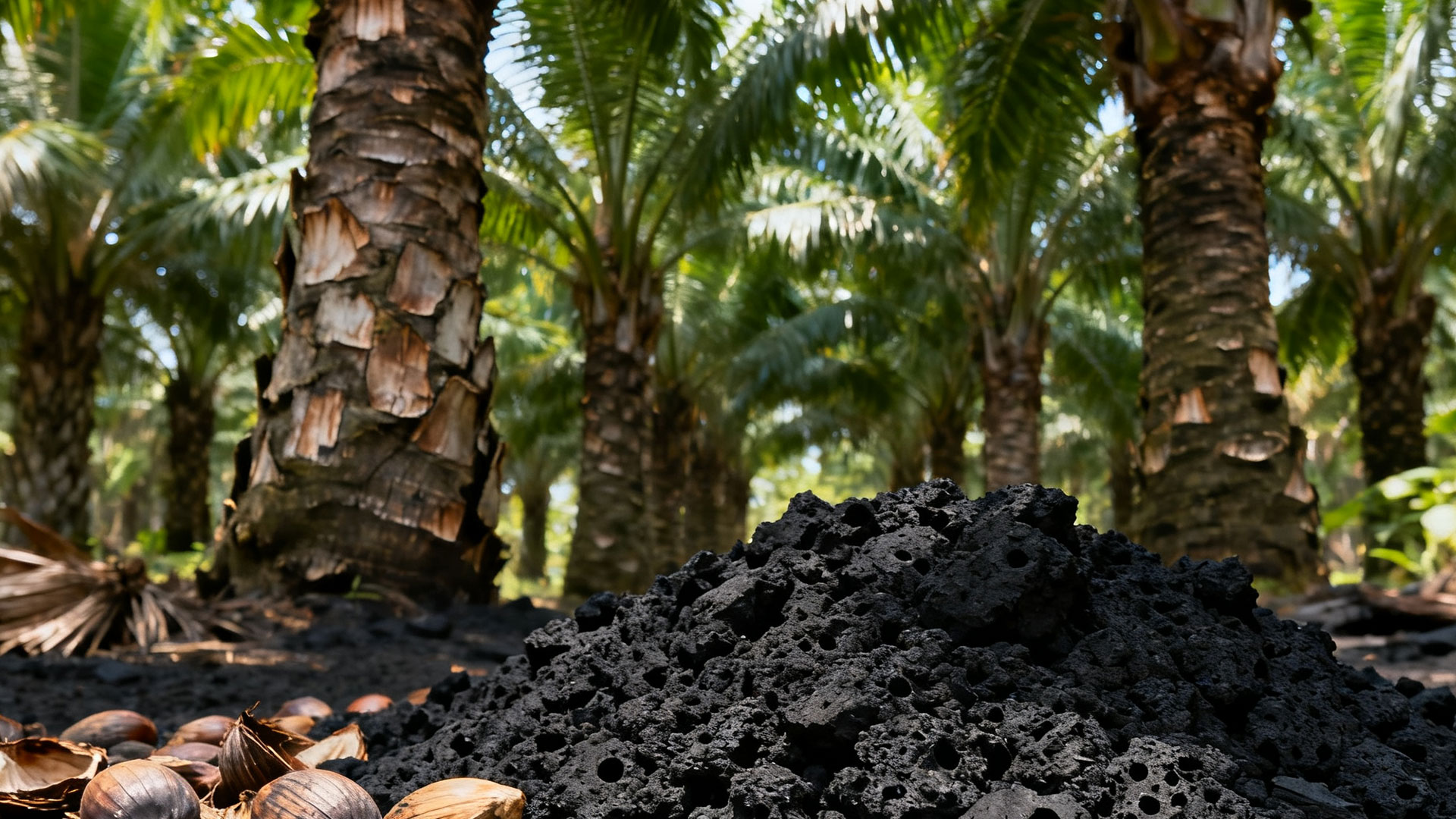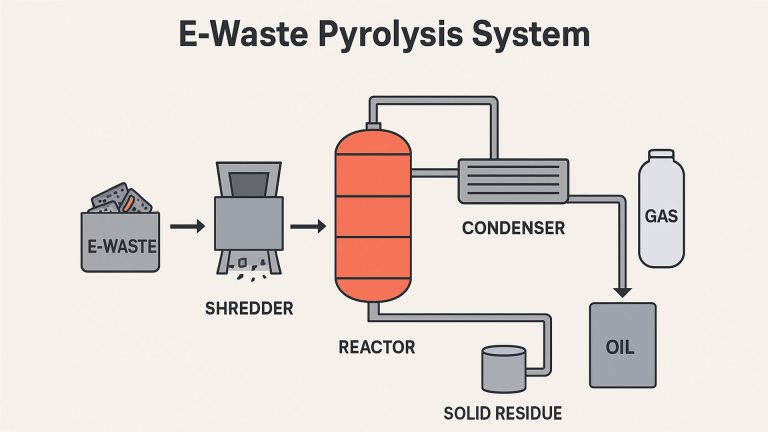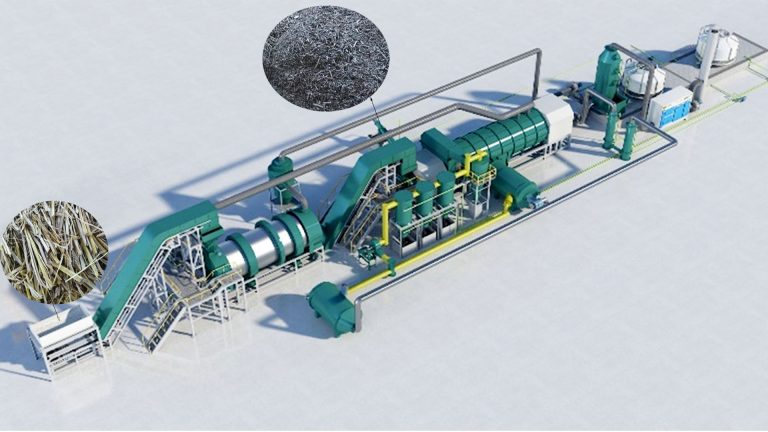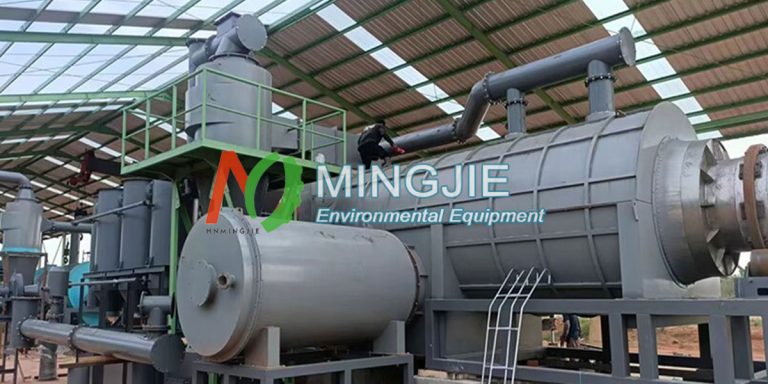Before palm oil is pressed, the pulp and kernel of the palm fruit must be separated. The palm kernel shell is the hard outer shell of the kernel. Its exceptionally hardness and high carbon content make it an ideal raw material for producing high-quality biochar. Palm kernel shell biochar is widely used in fuel replacement, activated carbon production, and soil improvement. The palm kernel shell biochar production realizes waste resource utilization, achieving both economic and environmental benefits.
In the field of resource recycling, biomass pyrolysis equipment can transform waste palm kernel shells into high-value charcoal products. Mingjie continuous carbonization equipment can operate 24 hours a day, greatly meeting the needs of large-scale palm kernel shell biochar production.
Its equipped with an exhaust gas treatment device ensures that exhaust gases meet environmental standards. It also captures and reuses combustible gases generated during the carbonization process. This provides continuous heat energy for the pyrolysis carbonization of palm kernel shells, truly achieving energy conservation and environmental protection.
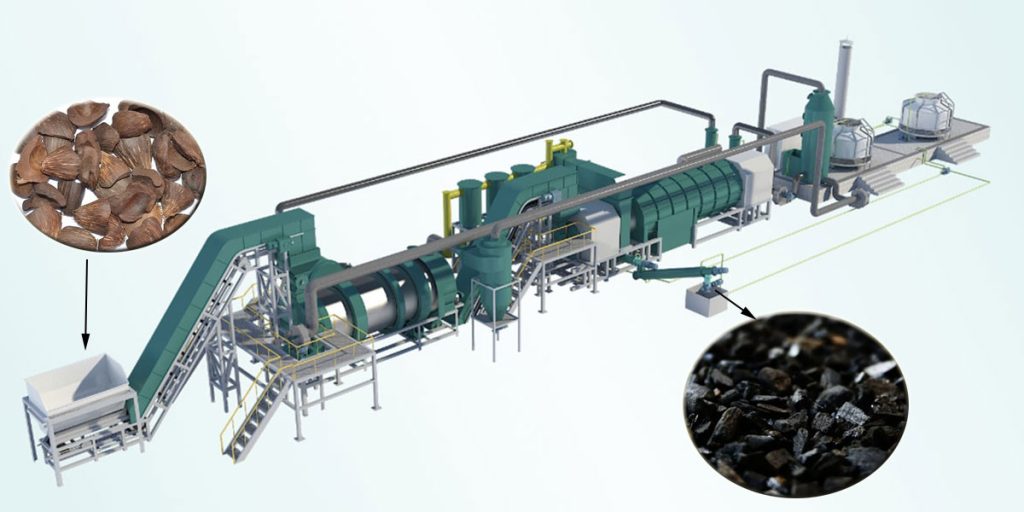
Furthermore, the continuous carbonization equipment has a high degree of automation. The PLC control cabinet allows operators to monitor equipment status in real time, making operation more convenient. This also improves the safety and stability of the palm kernel shell biochar production process, reducing labor intensity and human error.
Mingjie biomass carbonization plant can process a variety of waste biomass, such as wood, bamboo, rice husks, and sewage sludge. It is also suitable for palm shells, a unique biomass feedstock. The continuous biochar production equipment is equipped with an exhaust gas treatment and combustible gas recovery system. This effectively reduces environmental pollution and energy consumption, aligning with the concept of sustainable development.
Environmental Impact of Palm Kernel Shell Biochar Making
Recycling Agricultural Waste
Palm oil processing generates approximately 0.6 tons of palm kernel shells for every ton of palm oil produced. If not properly treated, these wastes are typically disposed of in two ways: open-air dumping or direct incineration.
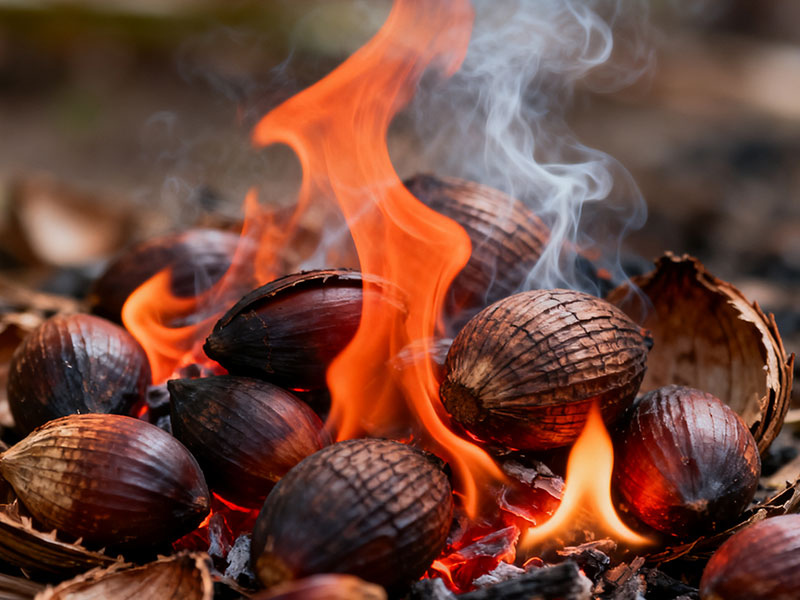
Open-air dumping consumes land resources and fosters mosquito breeding, producing leachate that pollutes soil and groundwater. Direct incineration releases large amounts of CO₂, particulate matter (PM2.5), and volatile organic compounds (VOCs), exacerbating air pollution.
Biochar machines convert palm kernel shells into charcoal, achieving 100% raw material utilization and completely eliminating pollution.
According to the Malaysian Palm Oil Association, palm kernel shell biochar production can reduce landfill volume by approximately 1.2 million tons annually and reduce the risk of soil contamination by 30%.
Contributing to Carbon Neutrality
One of the core environmental benefits of palm kernel shell biochar lies in its carbon sequestration capacity.
During the palm kernel shell charcoal production process, approximately 60%-70% of the carbon in the palm kernel shell is fixed in the solid charcoal, forming a stable biochar carbon reservoir. This prevents this carbon from being released into the atmosphere as CO₂ and CH₄ through incineration or natural degradation.
Research shows that 1 ton of palm kernel shell charcoal can fix approximately 0.8 tons of carbon, equivalent to reducing CO₂ emissions by 2.96 tons.
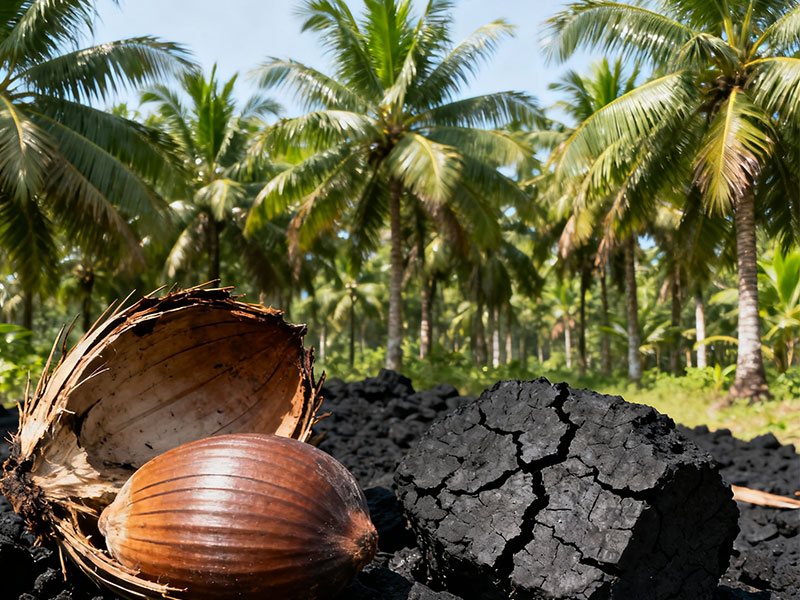
When used as a fuel, palm kernel shell charcoal has a combustion efficiency exceeding 85% and an ash content of less than 5%. Harmful gases such as SO₂ and NOₓ released during combustion are only 1/5-1/10 of those emitted by coal. It can replace fossil fuels in industrial boilers, residential heating, and other applications, further reducing carbon emissions.
For example, an Indonesian sugar refinery has replaced 30% of its coal with palm kernel shell charcoal. This reduces CO₂ emissions by approximately 42,000 tons annually and also reduces particulate matter emissions from boiler exhaust.
Pollution Control Applications
Palm kernel shell charcoal, due to its porous structure and high adsorption capacity, has demonstrated outstanding performance in pollution control.
Soil Improvement: When applied to soil, palm kernel shell charcoal can adsorb heavy metals (such as lead, cadmium, and chromium) and pesticide residues, reducing the bioavailability of pollutants.
Experiments at a Nigerian mining site showed that applying 500 kg of palm kernel shell charcoal per mu of soil reduced lead content in the soil by 42% and reduced heavy metal absorption by crops by 35%. Furthermore, the charcoal’s porous structure improves soil aeration, enhancing water and fertilizer retention, and reducing the use of chemical fertilizers.
Water Purification: After simple activation, palm kernel shell biochar can be used as a low-cost activated carbon. It can be used to treat organic matter in industrial and domestic wastewater.
A textile factory in Malaysia uses palm kernel shell-based activated carbon to treat printing and dyeing wastewater, achieving an 88% COD (chemical oxygen demand) removal rate. The treatment cost is only 60% of that of commercial activated carbon.

